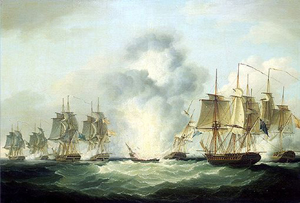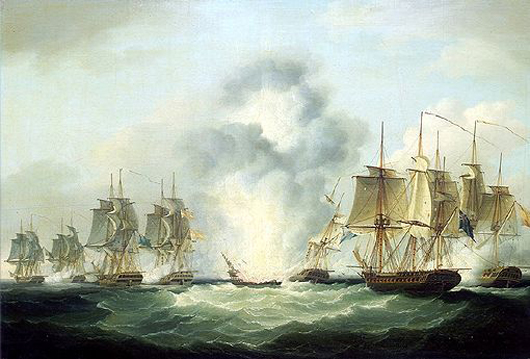
TAMPA, Fla. (AP) – A federal judge on Friday signed off on a Spanish government plan to begin moving a vast shipwreck treasure from Florida to Spain next week, culminating a five-year legal battle with the treasure hunters who found and raised it off the Portuguese coast.
U.S. Magistrate Judge James Pizzo ordered Tampa-based Odyssey Marine Exploration to give Spanish officials access to the 17 tons of silver coins and other artifacts beginning Tuesday. It’s been stored in an undisclosed facility since Odyssey salvaged it from the wreck of the Spanish galleon Nuestra Senora de las Mercedes and brought it back to the Tampa area in May 2007.
The treasure is expected to be moved out of the storage facility by Feb. 24, but because of security concerns officials wouldn’t disclose how or exactly when that would take place.
“This is a very complicated logistical operation that has been prepared well in advance,” said Guillermo Corral, who heads the cultural office of the Spanish embassy in Washington.
Odyssey, which uses remote-controlled vehicles to explore the depths and bring the tiniest of items to the surface, lost at every level of the federal court system in its attempt to keep all or most of the treasure. The Spanish government filed a claim soon after the coins were flown back to Tampa, contending that it never relinquished ownership of the ship or its contents. A federal district court first ruled in 2009 that the U.S. courts didn’t have jurisdiction, and ordered the treasure returned.
Melinda MacConnel, vice president and general counsel for Odyssey, said Spanish officials will be given access to the treasure and the company won’t contest the ruling. She said the company followed federal maritime law and did nothing wrong in salvaging the wreck and bringing it back to the United States without the cooperation or permission of Spain. She blamed politics for the courts’ decisions since the U.S. government publicly backed Spain’s efforts to get the treasure returned, and she lamented that the company was unable to bring the case to trial.
She said the ruling against Odyssey will keep other explorers from working with governments on salvage projects and set the stage for the covert plundering of other shipwrecks.
“We’ll allow (Spain) to celebrate, until they realize they’ve been very short-sighted in this case,” MacConnel said.
Spanish officials disagreed, with James Goold, the Washington attorney who fought Odyssey on the Spanish government’s behalf, likening the salvage of shipwrecks for profit to plundering the wreck of the USS Arizona in Pearl Harbor for souvenirs.
MacConnel said Odyssey learned from the struggle with Spain, noting that it is working with the full cooperation of the British government on several efforts to salvage that nation’s sunken ships, with agreements to share what it recovers.
Odyssey made an international splash in 2007 when it recovered the 594,000 coins and other artifacts from the Atlantic Ocean near the Straits of Gilbraltar. At the time, experts speculated the coins could be worth as much as $500 million to collectors, which would have made it the richest shipwreck treasure in history.
The company said in earnings statements that it has spent $2.6 million salvaging, transporting storing and conserving the treasure.
Odyssey fought Spain’s claim to the treasure, arguing that the wreck was never positively identified as the Nuestra Senora de las Mercedes. And if it was that vessel, then the ship was on a commercial trade trip—not on a sovereign mission—at the time it sank, meaning Spain would have no firm claim to the cargo. International treaties generally hold that warships sunk in battle are protected from treasure seekers.
The Nuestra Senora de las Mercedes was sunk by British warships in the Atlantic while sailing back from South America with more than 200 people on board.
People who claimed to be descendants of merchants who owned the coins also filed claims, but they were also rejected by the court. A Key West attorney, David Paul Horan, recently filed another lawsuit on behalf of the one of the descendants who is seeking 172,000 of the coins.
Goold told Pizzo that the coins will be taken in trucks to a secure location where they can be loaded onto a plane for transport. Spanish officials said the treasure will be distributed to museums where it can be studied, researched and exhibited.
___
Follow Mitch Stacy on Twitter at http://twitter.com/mitchstacy.
Copyright 2012 Associated Press. All rights reserved. This material may not be published, broadcast, rewritten, or redistributed.
AP-WF-02-17-12 2237GMT
ADDITIONAL IMAGE OF NOTE



